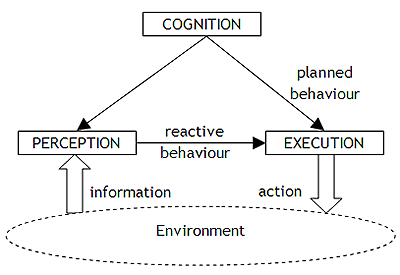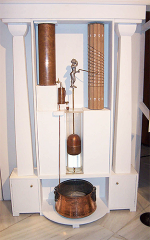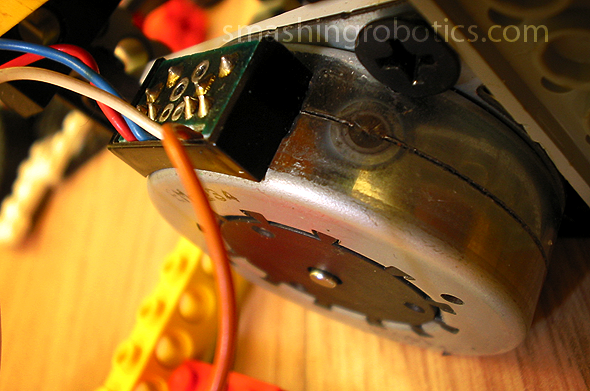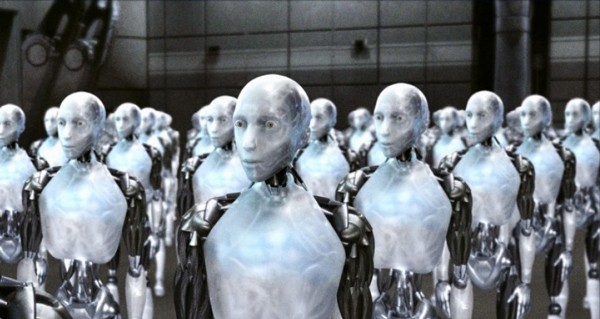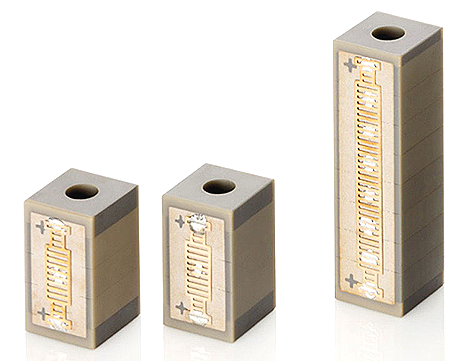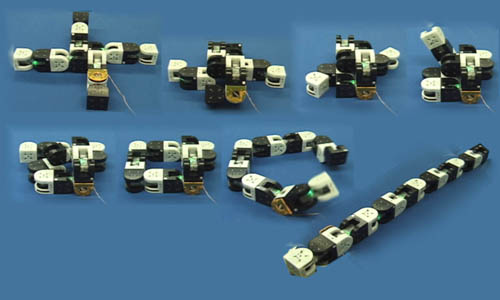By the term “machine” we understand an artificially manufactured object that interacts with its environment. For this interaction this object either takes energy from the environment and converts it into mechanical energy and dissipated heat or manipulates information.
From a chronological standpoint there were simple machines, they were controlled by a human operator, machines programmed to execute certain routines, more advanced than their predecessors and, of course, intelligent machines that have sensing capabilities, are able to recognize objects, can navigate, learn and have planning abilities. These machines can alter their behavior to adapt to the environment as well as to internal conditions and this adaptation can take place every time changes occur in the respective environments.
When we say “intelligent” we refer to the ability of a system to reach a certain goal or to have predictable behavior in uncertain conditions. Sources of uncertainty can be unexpected and unanticipated events, together with incomplete or insufficient information on deciding what is to be done.
Intelligent machines capable of making decisions in such conditions of uncertainty are different to programmed machines that do repetitive tasks and are capable of changing their behavior only based on input from a human operator.
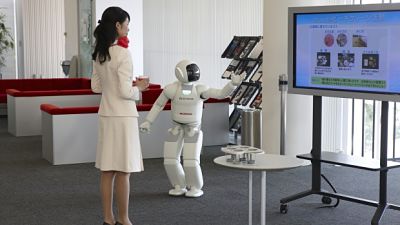
The definition of intelligence, stated earlier, refers to its basic level. Higher intelligence levels implemented in a machine assume it has abilities of learning from interactions with the environment, adapting to the environment with the purpose of reaching a goal and is capable of formulating new objectives. The degree of intelligence integrated into a machine has the purpose of improving its functional performance and to make the machine more friendly with the user and the environment.
Intelligent machines interact with the environment by means of inputs (information, energy, material and mechanical action of the environment upon the machine) and outputs (information, energy, actions exerted by the machine upon the environment). These machines can operate individually or can be linked to form systems. In the latter case the global performance of such a system is greater than the sum of performances of the machines that form the system.
Furthermore, intelligent machines can operate autonomously, without a complete control of the human operator, but with the possibility to collaborate with the latter and can operate in unstructured environments that can be dangerous or uncomfortable. Such intelligent machines can be found in domains like nuclear engineering, food industry, aerospace applications, constructions, transport, biomedical engineering, mining, petroleum and gas industries, military applications, fire extinguishing applications, underwater interventions and so forth.
Architecture of an intelligent machine
The most adequate architecture for intelligent machines is the one presented below, called “network architecture”.

As it can be observed in the image, an intelligent machine has the following basic subsystems:
- Perception this system has the role of collecting, storing, processing and distributing information about the actual status of the machine and the environment in which it operates;
- Cognition evaluates information collected by the perception system and does the planning for the machine’s actions;
- Execution handles every action of the machine, based on instructions from the two subsystems mentioned above. Instructions received from the cognition system determine a planned behavior while the ones received from the perception system determine a reactive behavior, the latter being more widespread;

Figure 3 – Planned and reactive behavior - Automated maintenance maintains the machine in good operating conditions. This subsystem monitors the behavior of the machine at a certain frequency, in order to prevent defects – preventive auto-maintenance – or to detect defects as soon as they appear – auto-diagnosis. In certain cases this system can even handle auto-repair tasks;
- Energy conversion system provides necessary forms of energy and quantity in order for the machine and all of its subsystems to function properly.
The physical components that compose these systems are sensors, transducers, actuators, processing units, communication networks, I/O devices, final execution elements (effectors), energy sources and so forth.
Defining the basic functions
The three basic functions of an intelligent machine are perception, cognition and execution. Though very well identified no clear lines can be drawn between these three functions, as they are not necessarily implemented as distinct components or units.
Perception
The perception function provides information about the actual state of the system and its environment. In order to achieve this function, sensors, transducers and data acquisition systems are employed. Collected information is organized and preprocessed in order to reduce uncertainty about tracked parameters.
Perception is also a very important function of biological systems. A wide range of solutions that are adopted in engineering are analogous to the natural world. The human organism is an open biosystem which constantly exchanges energy, information and substances with the environment. This exchange is accomplished through the five human senses: sight (83%), hearing (11%), tactile (1,5%), smell (3,5%) and taste (1%). The human organism also gathers information from its internal environment.
Sensorial capacity is augmented by combining information gathered internally and externally. Conscious recognition of a stimulus acting on the organism is called “sensation”. Through perception we understand the process of interpreting the sensation, to determine its nature. Sensation is an elementary process, while perception is a complex process that implies comparing, differentiating and integrating sensations. Sensorial and sensitive perception implies converting information carried by internal and external stimuli into information carried by nervous impulses and an interpretation of it.
By “stimulus” we understand a physico-chemical factor from the external or internal environment of an organism which, by acting at receptor cell level, can cause transitory propagated alterations of the cells’ state. These stimuli are defined by their nature (chemical, electrical, mechanical, etc.), the type of variation (continuous, alternate or in the form of impulses), intensity and its variation, duration, spatial spread and temporal distribution.
Cognition
The cognition function consists in planning an initiating the machine’s actions while taking into account information provided by perception. Cognition refers to making decisions regarding actions to be carried out by the machine. At any moment in time a great amount of future possible machine states are possible so, through the cognition function, the future behavior of the machine that provides the highest long term advantages (i.e. low material cost, low energy and other resources usage, minimum danger and so on) is chosen.
The term “knowledge” is to be used only for those subsystems of the machine that can make decisions in varied and uncertain conditions. A good cognition subsystem is able to learn from its own experience, thus being able to alter its decision making behavior.
We can regard an intelligent machine to be analogous to the human bio-system. The basic hardware components of a computer are an arithmetic logic unit, a control unit, memory and I/O equipment, this structure being very similar to the human brain and sensory system structure. Although similar in structure, there are key differences between the human brain and a digital machine. Processing speed for instance is very different, computers – i.e. digital machines – are up to millions of times faster than the human brain, yet lack the ability to do parallel processing of the information, they can only handle it sequentially. On the other hand, attributes unique to the human brain are perception, inventiveness, abstract reasoning, wisdom, flexibility, associative, creative and adaptive thinking.
Execution
The execution function has the role of initiating, controlling, handling and terminating the machine’s actions, based on instructions received from cognition and perception systems. The machine’s actions represent the interaction with the environment, so the main elements in the execution system are the actuators. There is a very large variety of mechatronic actuators, however they generally have the structure represented in the following diagram.

Conversion of input energy into useful output energy and dissipated heat takes place through interactions of the electrical and magnetic fields so that physical phenomena like the following occur: piezoelectricity, magnetostriction, shape retention — with temperature, or as a result of phase change, electrorheological, electrohydrodynamic and diamagnetic effects. The actuator mechanism transforms, amplifies and transmits motion according to specific technological parameters. Mechatronic actuators can be designed to be linear or rotational, with limited or theoretically unlimited travel and with one ore more active elements in their structure.
Based on the criteria mentioned so far, we can make a few classifications of the actuators in use today. Based on their design we have actuators:
With theoretically unlimited travel – DC micromotors, AC synchronous and asynchronous motors and electrostatic micromotors;
With limited travel – DC linear micromotors, microelectromagnets.
With respect to the input signal used for a controlled deformation of the active element, actuators can be:
- thermally controlled – by means of heat flow;
- bimetallic;
- based on shape retention alloys;
- electrically controlled – electric field intensity;
- piezoelectric, various types;
- electrorheological;
- magnetically controlled – magnetic induction;
- magnetostrictive;
- based on ferrofluids;
- optically controlled – optoelectric, optothermal;
- thermo, electro and photostrictive;
- chemically controlled;
- artificial muscles;
- pyroelectric;
- other types of actuators based on other phenomena.
Application-specific actuators complete the range of execution elements utilized nowadays, examples of such actuators are DC servomotors, stepper motors, asynchronous or synchronous electric motors, pneumatic, hydraulic or electrohydraulic execution elements, etc.
Conclusions
The diversity of physical phenomena can open new horizons in research and development of new actuators based on physical principles not receiving great consideration until now and can also broaden material choice and development in order to increase the degree of adaptation in various applications.
Analogous to the natural world, artificial systems can perform in almost any environment in an endless number of applications. These systems can move by crawling like a snake or a worm, can walk like a human or a spider, can jump or roll, they can be wheeled or tracked and any combination of these solutions.
Resources
- D. Dragulescu, “Dinamica robotilor” (romanian), 1997
- R. Siegwart, I. R. Nourbakhsh, “Introduction To Autonomous Mobile Robots”, 2004
- G. Dudek, M. Jenkin, “Computational Principles Of Mobile Robotics”, 2010
- Honda Asimo, Official Website
- Sony Aibo


